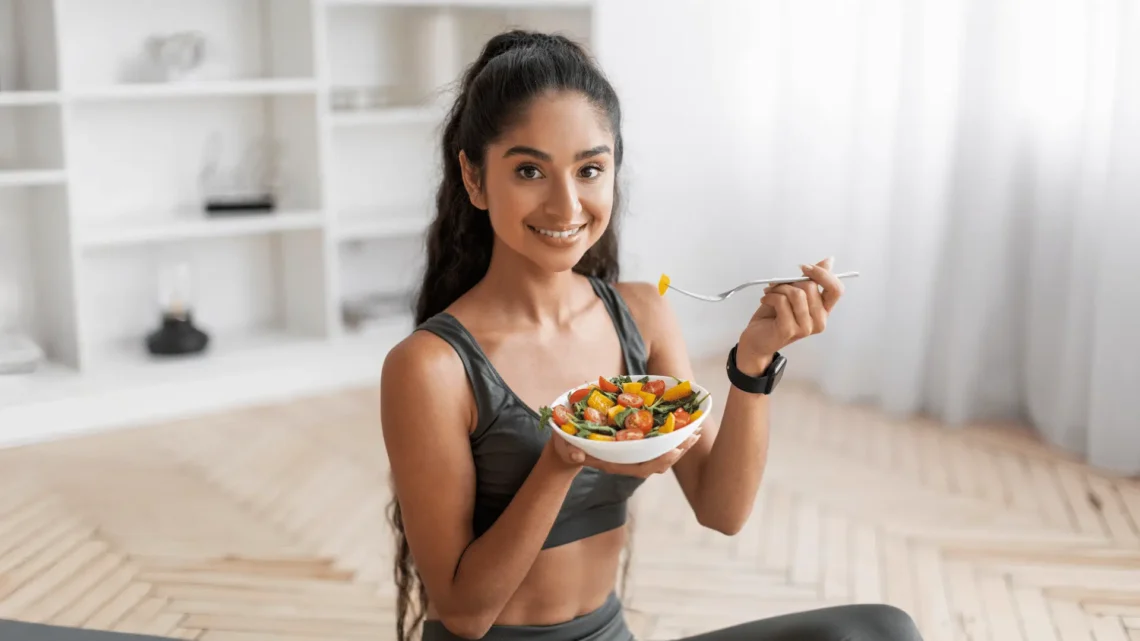
The Truth About “Clean Eating” — What Nutritionists Won’t Say
“Clean eating” has become one of the most powerful phrases in the $4.5 trillion global wellness industry.
Search the term today and you’ll find millions of results: clean eating meal plans, clean eating recipes, clean eating for beginners, clean eating grocery lists, 7-day clean eating challenges, and countless before-and-after photos of shredded abs next to a bowl of zucchini noodles.
Trending Now!!:
It sounds pure. It sounds simple. It sounds undeniably good. But after more than a decade of watching this trend explode — and quietly treating the fallout in private practice — many registered dietitians and nutrition scientists have a very different perspective.
One they rarely broadcast loudly because the backlash is swift and brutal. Here is the unfiltered truth about clean eating that most influencers, celebrity trainers, and even some wellness-focused doctors won’t tell you.
1. There Is No Scientific Definition of “Clean Eating”
Go to PubMed and search “clean eating randomized controlled trial.” You’ll find almost nothing. Why? Because the term has never been standardized.
- To one guru, clean eating means 100% organic, plant-based, and oil-free.
- To another, it means Paleo — meat-heavy, grain-free, and dairy-free.
- To a third, it means avoiding an ever-growing list of “inflammatory foods”: gluten, lectins, nightshades, oxalates, histamines, FODMAPs, seed oils, natural flavors, and carrageenan.
These rules often contradict each other, yet all claim to be the one true way to eat “clean.” That alone should raise red flags.
The Academy of Nutrition and Dietetics, the British Dietetic Association, and the American Society for Nutrition do not recognize “clean eating” as an evidence-based dietary pattern. Period.
2. Clean Eating Is Strongly Linked to Orthorexia
Orthorexia nervosa — the pathological obsession with “healthy” or “pure” eating — was first described in 1997, but it exploded alongside the clean eating movement.
A 2022 study in Eating and Weight Disorders found that people scoring high on clean-eating beliefs were 5–8 times more likely to exhibit orthorexic tendencies.
Another 2024 paper in Appetite showed that rigid clean-eating social media content directly predicted increased food-related anxiety in young adults.
Yet you will rarely see an influencer add a disclaimer: “Following my plan may increase your risk of an eating disorder.”
3. You Can Be “Clean” and Still Be Malnourished
Eliminating food groups without expert guidance is a fast track to deficiencies. Real-world cases dietitians see weekly:
- 28-year-old woman eating “clean” (vegan + grain-free) for two years → severe B12 deficiency, hair loss, and neurological symptoms.
- Fitness influencer avoiding all seed oils and legumes → critically low omega-3 index and zinc deficiency despite perfect-looking meals.
- Teen following TikTok clean-eating trends → iron-deficiency anemia from cutting out red meat and fortified cereals without replacements.
Whole foods are great. Dogmatically removing entire categories because an influencer called them “toxic” is not.
4. Organic and “Clean” Foods Don’t Make You Healthier (in Any Meaningful Way)
The largest review ever conducted on organic vs. conventional produce (Stanford 2012, updated 2019 and 2024) found:
- No significant difference in vitamin or mineral content
- Slightly lower pesticide residues in organic (but still well below safety limits)
- No difference in health outcomes for consumers
A 2023 French NutriNet-Santé cohort study followed 70,000 adults for eight years and found that high organic food consumers had marginally lower cancer risk — but the effect disappeared after controlling for overall diet quality, education, income, and exercise.
Translation: Eating more vegetables matters. Whether they’re organic does not.
5. Clean Eating Is Expensive — and the Price Is Rarely Justified
A 2024 cost analysis published in JAMA compared three dietary patterns:
- Standard American diet
- Mediterranean diet (evidence-based)
- Popular “clean eating” protocol (organic, gluten-free, no processed foods)
The clean-eating pattern cost 52–78% more per week, with zero additional improvement in cardiovascular markers, blood sugar, or inflammation after 12 months.
6. The 90/10 Rule Gives You 99% of the Benefits Without the Dogma
Decades of research on long-term health (Blue Zones, PREDIMED, Nurses’ Health Study, EPIC-Oxford) show one consistent pattern: people who get roughly 85–90% of calories from minimally processed foods (vegetables, fruits, legumes, whole grains, nuts, seafood, olive oil, etc.) and 10–15% from whatever they enjoy live longer, healthier lives — with dramatically better mental health and diet adherence.
That 10–15% is not “cheating.” It’s the difference between a sustainable lifestyle and a restrictive cult.
7. Detoxes, Cleanses, and “Toxins” Are Marketing Myths
Your liver, kidneys, skin, lungs, and gut already detoxify you perfectly — unless you have end-stage organ failure. Celery juice does not “alkalize” your blood (your body tightly regulates pH).
Activated charcoal does not “pull out heavy metals” when taken orally. No juice cleanse has ever been shown to remove more toxins than a normal day of eating and pooping.
These claims violate basic physiology and chemistry — yet they still fund multi-million-dollar empires.
Why Most Nutritionists Stay Silent
If a dietitian posts a balanced take-down of clean eating dogma on social media, the response is predictable:
- Accusations of being paid by “Big Food”
- Death threats
- Doxxing
- Being called “fatphobic” or “anti-health”
Many choose to fight the war in private practice instead — gently helping clients recover from orthorexia, reintroduce gluten without bloating, or simply enjoy birthday cake again.
The Real Way to Eat for Health, Energy, and Longevity (No Label Required)
- Fill half your plate with vegetables and fruits (fresh, frozen, conventional — doesn’t matter).
- Include protein at every meal (seafood, eggs, dairy, legumes, poultry, meat — whatever you enjoy and tolerate).
- Don’t fear carbs — choose mostly whole-food sources (oats, quinoa, rice, potatoes, whole grains, beans).
- Add healthy fats (olive oil, avocados, nuts, seeds, fatty fish).
- Minimize (but don’t obsess over) ultra-processed junk and sugary drinks.
- Move your body daily.
- Sleep 7–9 hours.
- Manage stress.
- Enjoy wine, chocolate, pizza, or ice cream in normal portions without guilt.
That’s it. No $300 grocery hauls. No banned food lists. No fear of “inflammation” from a sandwich.
Final Thought
Clean eating started with a kernel of truth: most of us would benefit from more whole foods and fewer chicken nuggets.
But it has morphed into an orthodoxy that creates fear, division, and profit while delivering no proven superiority over basic balanced eating. You don’t need to eat “perfectly” to be healthy. You need to eat adequately, consistently, and joyfully.
Your body is far less fragile than the wellness industry wants you to believe — and far more resilient when you stop treating food like the enemy.
That’s the truth about clean eating — the one you won’t find under a perfectly lit Buddha bowl on Instagram.

